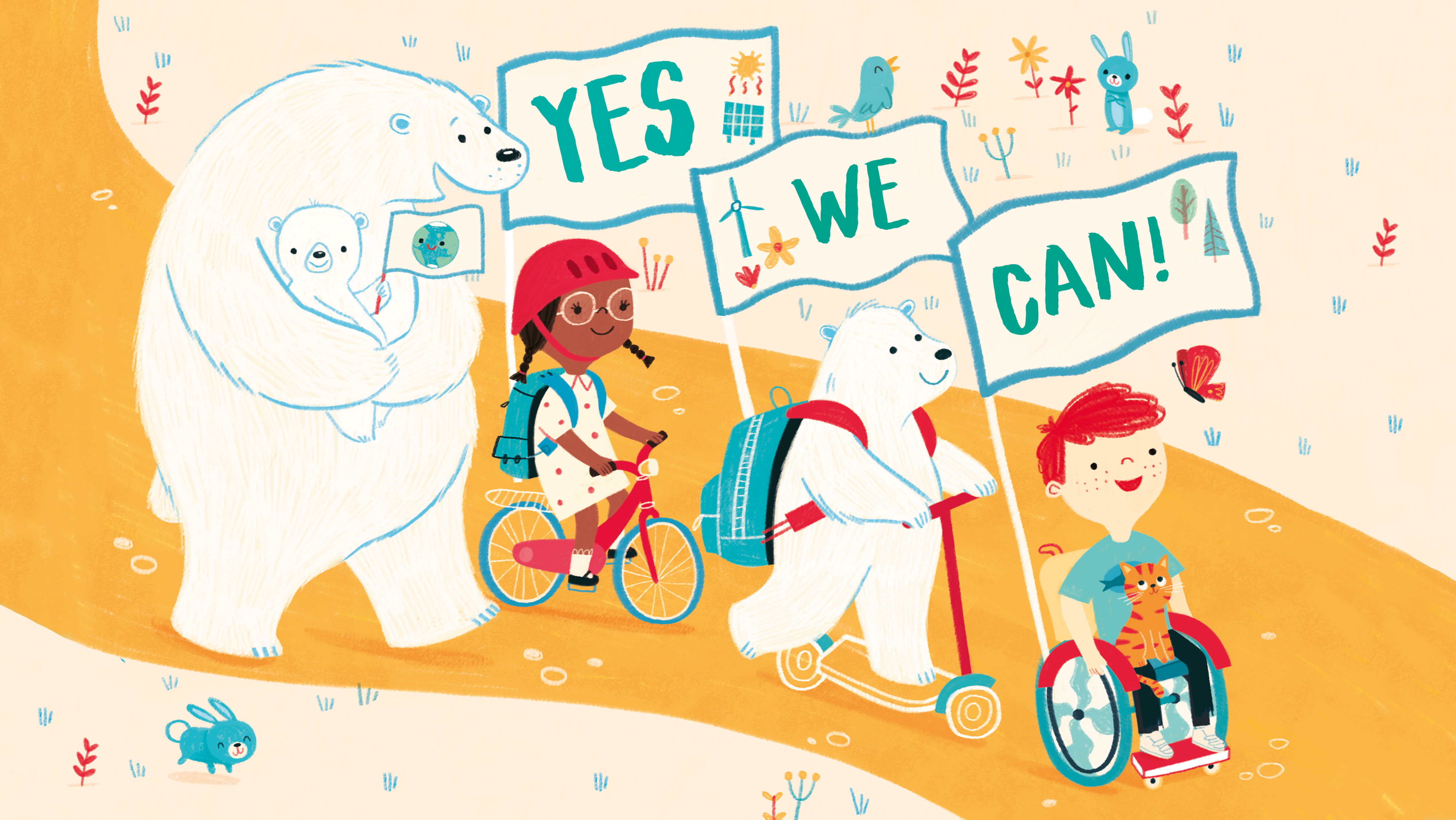- Readers and books
Can kids really understand the climate crisis and do something about it?

Katie Daynes describes how she explains global warming in her children’s book Can We Really Help the Polar Bears? – and the importance of listening to the next generation.
Now more than ever we need HOPE and ACTION. Trying to bring up kids in a world of uncertainty is tough, but the future is theirs and the best thing we can do as parents/carers/educators is to encourage, empower and enthuse them to play their own positive part.
Yes, it’s DEEPLY UNFAIR that our children are inheriting a world in peril.
Yes, it’s clearly NOT THEIR FAULT and they shouldn’t feel weighed down with the responsibility to fix everything.
But yes they CAN MAKE A DIFFERENCE and yes their voice REALLY MATTERS.
This flurry of thoughts was the starting point for Usborne’s new Can we really help… series. The first title Can We Really Help the Polar Bears?, publishing in September 2021, looks at global warming and our planet’s climate crisis – without mentioning either of those terms. Instead, it’s a story about a family of polar bears who visit Warmland to ask a bunch of sparky kids for their help.
Quite understandably, the children want to know, Why us? What can WE do? And if the melting ice means polar bears can no longer hunt for seals, why don’t they just eat something else instead? But gradually the enormity of the situation dawns on the kids and they realize something has to be done, fast. They also realize that the answer is surprisingly simple – STOP MAKING GREENHOUSE GASES.
Of course, that’s not as easy as it sounds, but by now the kids are fired-up and bursting with great ideas, from knitting woolly jumpers for houses to inventing cars that run on water. Most importantly, they decide that we can only really make a difference if EVERYONE understands the problem and TAKES ACTION. Cue a production line of kids folding up copies of their Greenhouse Gas Plan to stuff into envelopes and send to the leaders of all the countries and big businesses in the world.*
By the end of the book, the kids realize that they REALLY CAN help the polar bears and, as the polar bears point out, their actions will help the rest of the world too.
When we first thought about doing this book, there was some concern that an explanation of global warming would be too much for this young age group (5+). But once I saw the proposed cover – Róisín Hahessy’s delightful artwork alongside the title Can we really help the Polar Bears? – I knew exactly how we could make the project work. We’d make it a conversation – a two-way dialogue between the surprisingly well-informed polar bears and the keen-to-act kids.
Kids don’t shy away from asking the big questions or pointing out the inconvenient truths. They’re passionate about animals and the world around them. They’re bursting with ideas and imagination – and they love it when grown-ups take them seriously. While it’s important to shelter our children from too much doom and gloom, they also deserve to know the facts, to have their voices heard, and to play their own part in shaping the future. Now more than ever we need HOPE and ACTION.
*Hopefully the kids’ letters will reach the eyes and ears of everyone attending the UN Climate Change Conference (COP26) in November 2021, and convince our leaders to make some bold, brave and world-saving decisions.



